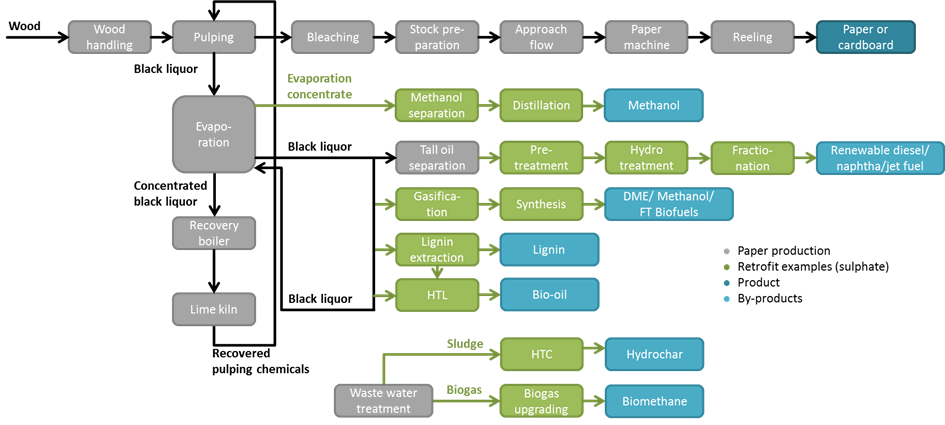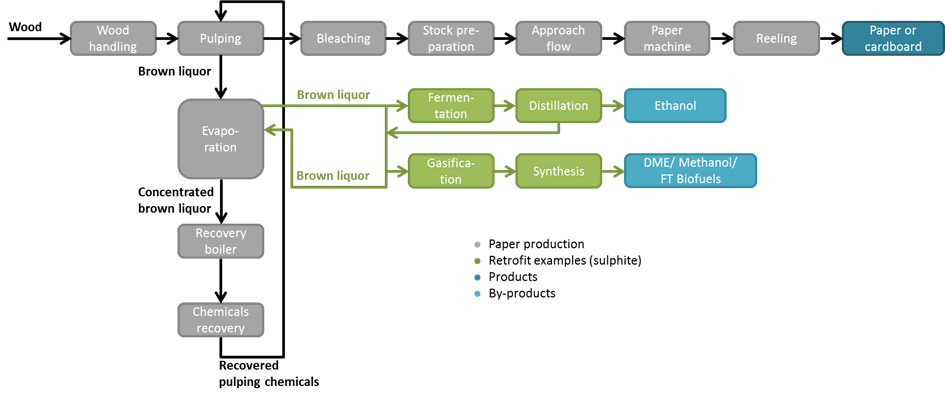Pulp and paper
For paper production, wood is chopped into small chops. Afterwards the pulp fibres can be extracted during pulping process. There are two different main pulping processes, the sulphate (also called Kraft) and the sulphite process. The sulphate process uses sodium hydroxide and sodium sulphide in order to break bonds between lignin, hemicellulose and cellulose, whereas the sulphate process uses a sulphite salt solution. This results in, among others, different pH values during the process and different composition of chemicals. After pulping, the pulp is washed, bleached, prepared and reeled. The black or brown liquor (depending on which pulping process was used) is separated from the fibres and concentrated, and the chemicals are recovered. Possible bioenergy retrofitting options depend on the process type, and can also include replacing fossil-based process energy with bioenergy.
One of the retrofitting options is to replace fossil fuels used for the lime kiln with biomass. E.g. bark from wood handling can be gasified and the syngas used for firing the lime kiln. Other options are to replace those fossil fuels with biogas from anaerobic digestion, or with hydrochar from the waste water treatment plant.
Source: BIOFIT Project
View at larger size >>
Other retrofitting options focus on producing further biofuel products from process streams. During the sulphate pulping process, black liquor is separated from pulp. Black liquor can be further processed to advanced renewable transport fuels, or lignin can be extracted from the black liquor. Additionally, evaporation concentrate can be processed to methanol via distillation. The waste water treatment plant can be retrofitted with a biogas upgrading or a hydrothermal carbonization step, in order to produce biogas or hydrochar.
Source: BIOFIT Project
View at larger size >>
During the sulphite pulping process , brown liquor is produced. Brown liquor can be fermented and distilled to ethanol or further processed to DME, methanol or FT-fuels, via gasificiation and synthesis.
Source: BIOFIT Project
View at larger size >>



